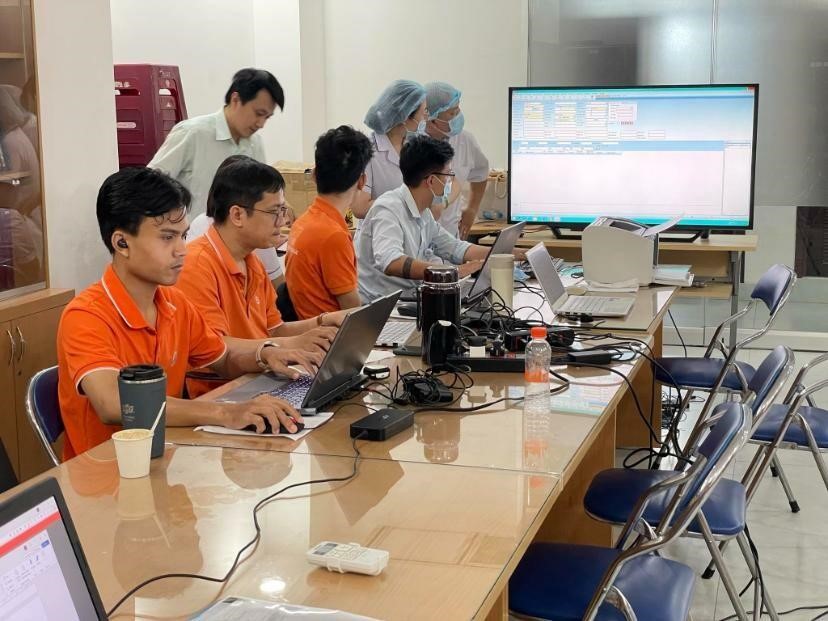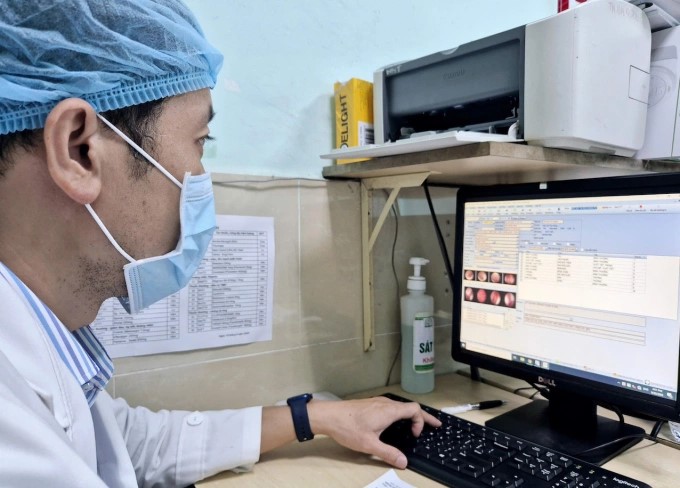FPT pioneers Ho Chi Minh City’s healthcare digital transformation with FPT.EMR System
Thick stacks of paper medical records are gradually giving way to just a few clicks on a computer screen as hospitals in Ho Chi Minh City enter the final stretch of their transition to electronic medical records – a key milestone in Vietnam’s comprehensive healthcare digitalization journey ahead of the September 30 deadline. In this transformation, FPT is honored to accompany and collaborate with hospitals in deploying its FPT.EMR electronic medical record system, contributing to the healthcare sector’s digital transformation in line with the Ministry of Health’s roadmap and Resolution 57-NQ/TW.
The FPT project team worked closely with doctors and medical staff to successfully deploy the EMR system
The implementation at Ho Chi Minh City Ear, Nose and Throat Hospital demonstrates that the benefits of electronic medical records (EMR) go far beyond reducing paperwork. According to Dr. Ly Quang Khai, in the past, each patient file required manually filling out numerous repetitive forms. Now, with just a few clicks, data is entered once and automatically synchronized across the entire system. This allows doctors and medical staff to devote more time to their professional work while minimizing errors in record-keeping and interdepartmental communication.
Dr. Khai is creating an electronic medical record for a patient.
After more than a year of rigorous testing and refinement, the electronic medical record system has been officially rolled out hospital-wide. From the emergency department and operating rooms to inpatient wards, hundreds of doctors, nurses, and technicians now enter and retrieve data on computers and iPads instead of using paper records.
According to Dr. Khuu Minh Thai, Specialist Level II, and Deputy Director of the hospital, “Once the system operates stably, the benefits are immediately evident. All data – from administrative records, lab results, and medical imaging to treatment information are interconnected, eliminating repetitive documentation by physicians.”
Beyond reducing administrative workload, the electronic medical record system significantly enhances the patient experience. Returning patients no longer need to bring paper files, as their full treatment history and prescriptions are readily accessible. Medical orders are updated instantly, minimizing errors from manual entries and shortening treatment times. A 2022 Health Affairs study found that adopting EMR can reduce administrative management time by 35% and improve patient care efficiency by 15–20% – clear evidence of the tangible value that hospitals in Vietnam are now steadily realizing.
Dr. Le Tran Quang Minh, PhD, Specialist Level II, and Director of Ho Chi Minh City Ear, Nose and Throat Hospital, noted that electronic medical record data also enable seamless synchronization across departments, supporting instant reporting and analytics. “While maintaining daily medical operations, the hospital is also continuously refining the software to ensure smoother performance, moving toward the model of a smart hospital,” he shared.
This picture reflects a broader trend across many hospitals in Ho Chi Minh City in the final days of September. As of early September, about 500 out of more than 1,800 hospitals nationwide had transitioned to electronic medical records – a testament to the healthcare sector’s adaptability in the face of digital transformation, ensuring compliance with the Ministry of Health’s September 30 deadline for phasing out paper records.
At Gia Dinh People’s Hospital, where the EMR system has been fully operational since the beginning of the year, medical data are centrally stored and easily accessible for interdepartmental transfers or follow-up visits. The system also lays the groundwork for healthcare Big Data and AI applications, paving the way for advanced analytics, forecasting, and the development of personalized healthcare in the future.
A patient checks their personal electronic medical record on a mobile phone
In addition, the implementation of electronic medical records calls for synchronized infrastructure and legal frameworks. Hospitals have proposed that the Ministry of Health continue refining detailed guidelines and establish mechanisms to support IT investment — particularly for major hospitals that handle large patient volumes. A stable network system, robust servers, and nationwide data interoperability are essential factors for maximizing the effectiveness of electronic medical records.
When healthcare data are interconnected nationwide, each patient’s medical record will form a comprehensive “health portrait,” enabling doctors to make faster, more accurate, and safer treatment decisions. This is precisely the goal that FPT and the healthcare sector are jointly pursuing – where digital transformation is not merely about changing tools, but about fundamentally reimagining how healthcare is managed and delivered to citizens.


















